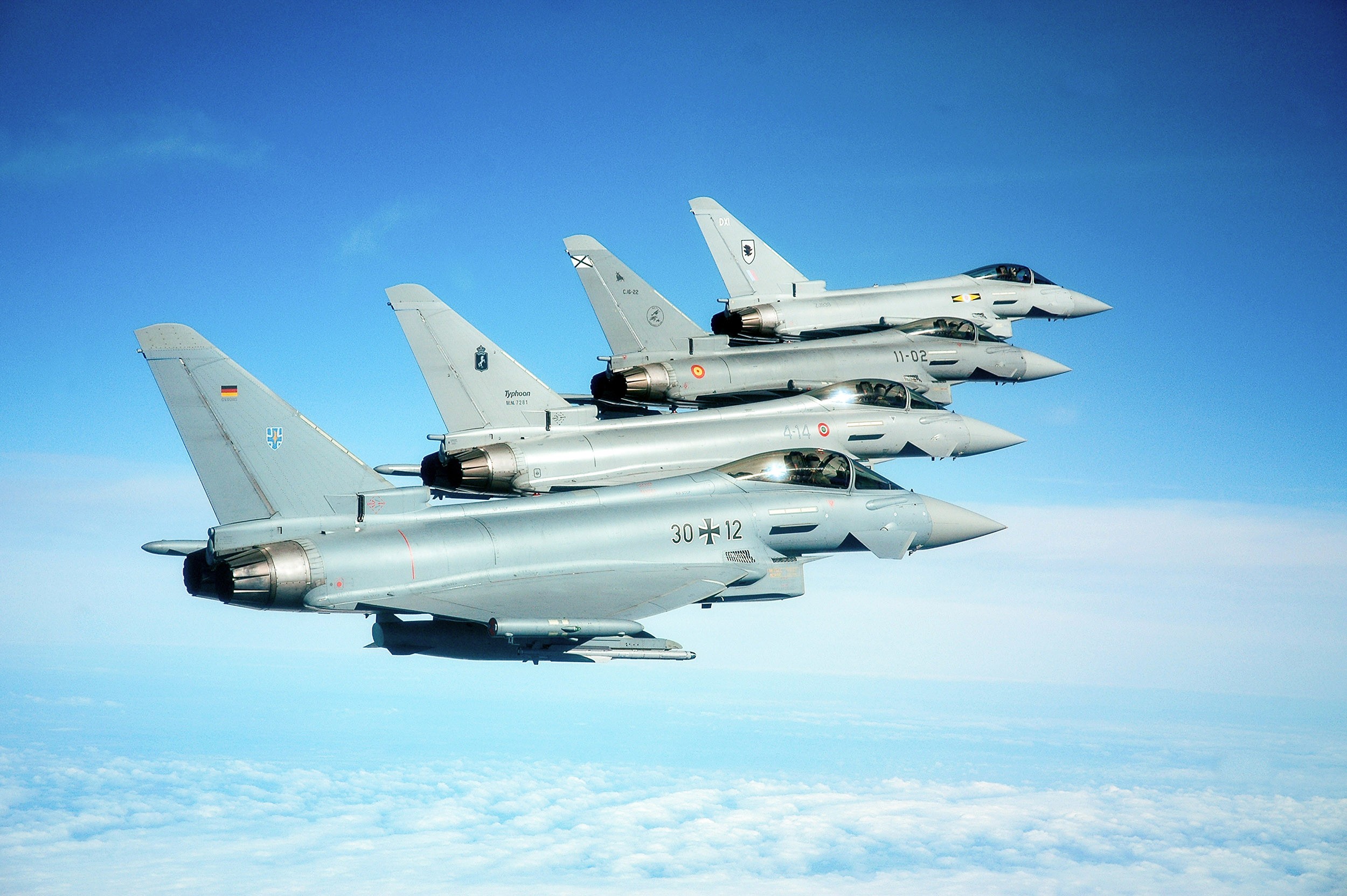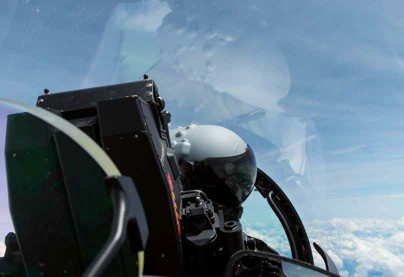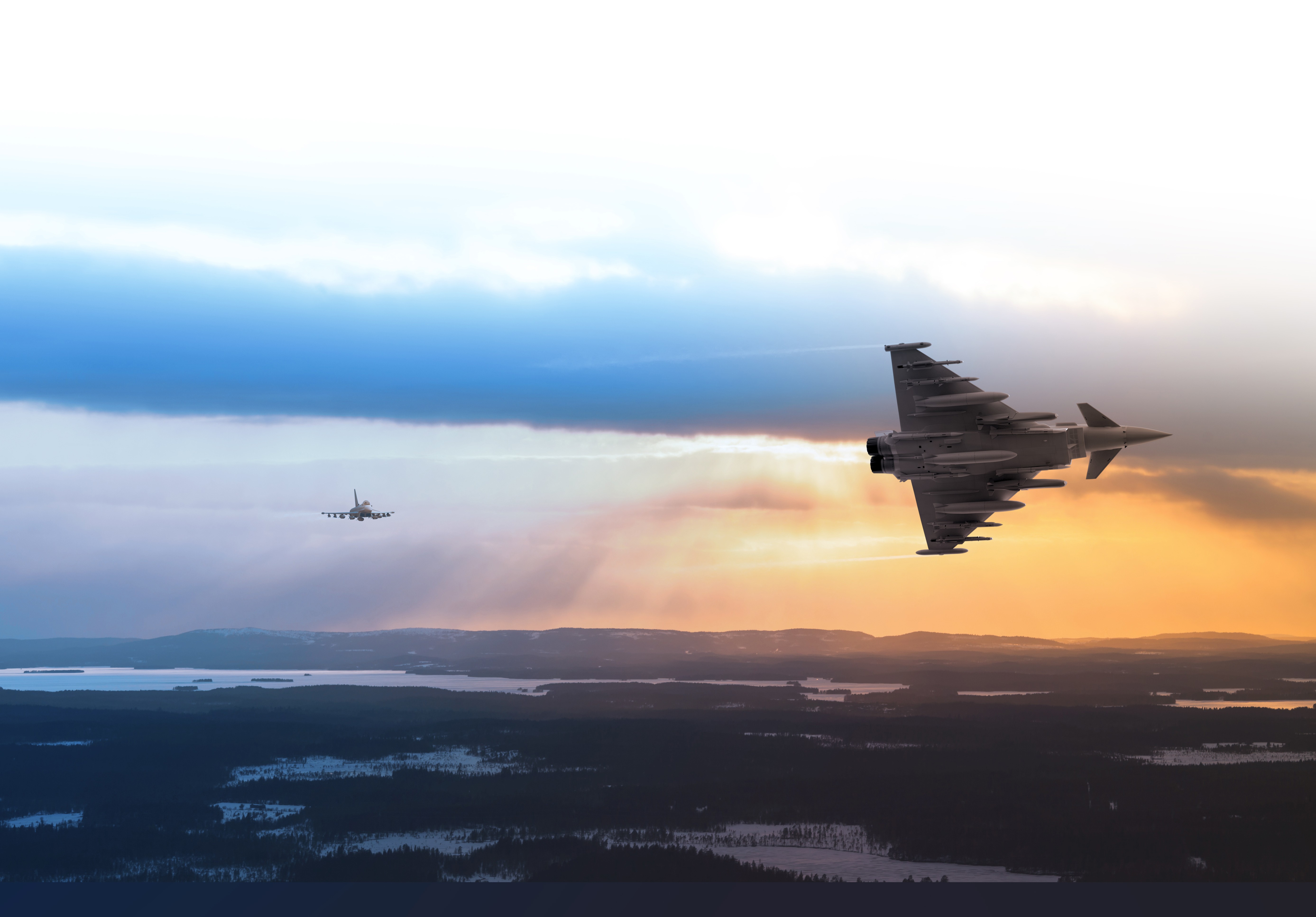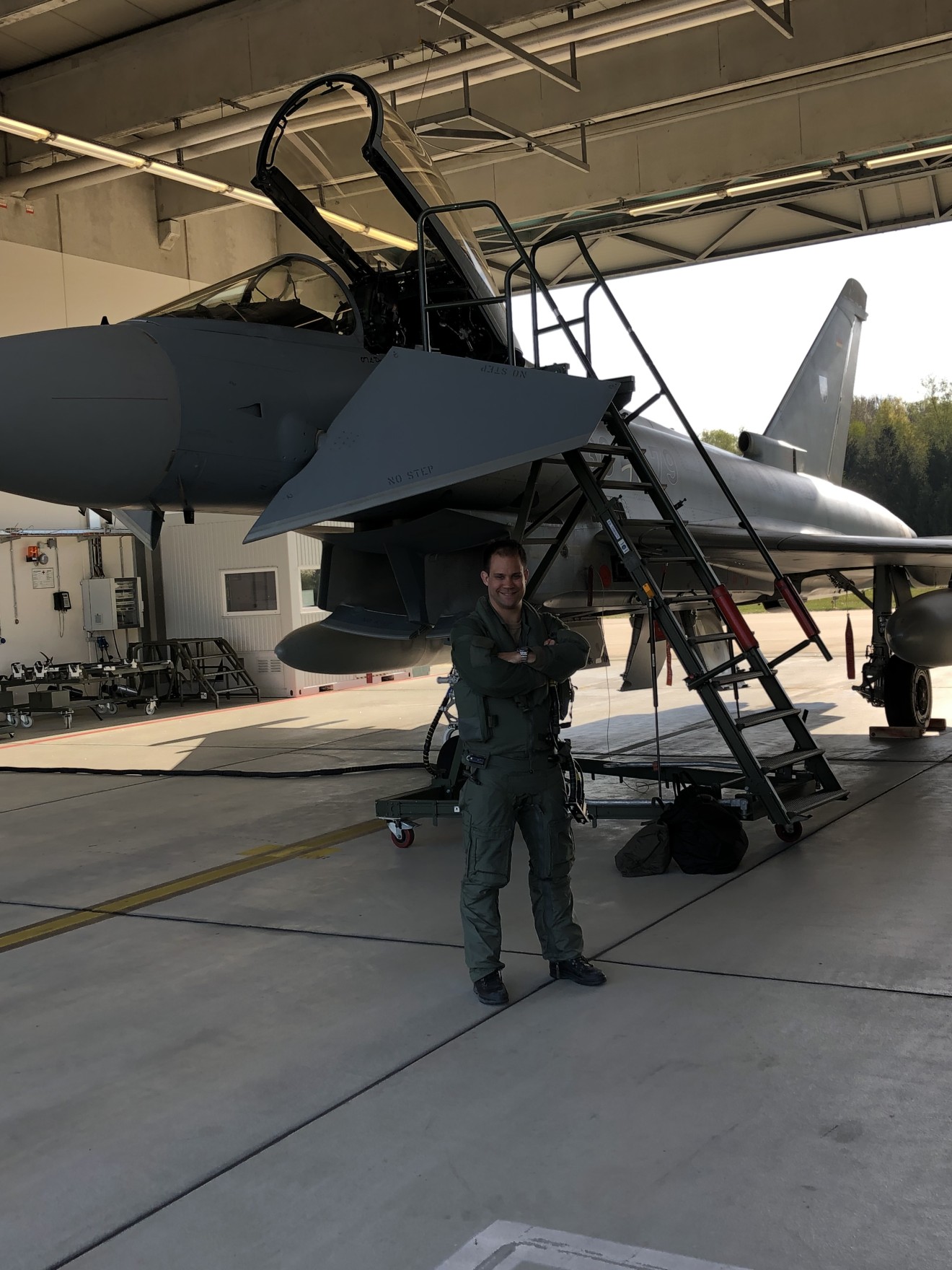What is interoperability?
From a front-line pilot’s perspective, interoperability is the ability to work together with different platforms and assets in a secure and efficient manner. In really simple terms, it means I can fly my Typhoon together with a UK F-35 and we can share information mid-flight. Essentially it is about being able to distribute and share information — mainly data — between forces, whether that’s with other aircraft of different types, ships or ground forces.
The information is shared via data links. Another area where interoperability is key is in the partnerships between air forces operating the same weapon system. Here there are clear synergies, as, for example, demonstrated by the UK RAF and the Luftwaffe during the NATO Baltic Air Policing missions in 2020.

Why is it important?
Sharing data this way significantly reduces the time it takes for a pilot to act. This data sharing is not a manual operation, it's done automatically through the jet’s on-board computers. However, the pilot is always in full control of exactly what data he is sharing. The other factor is that interoperability reduces the risk of human error. In mission terms it’s about taking decisions where speed and accuracy are a matter of life or death. And here I do not just mean military, it’s about protecting civilian lives too.
The main point is that thanks to Typhoon’s interoperability I am able to fly anytime, anywhere, with any asset in the battle space, to fulfil the mission in the shortest time necessary.
In the military environment, a key consideration is security. Being able to send and receive data securely across the different data links is a crucial part. Challenging but critical.
What does it look like in operational terms?
For example, I may be flying in a joint NATO mission, as part of a German Air Force four ship formation, when one of the UK assets, a warship say, needs to send me information to attack a specific adversary aircraft.
It would not send a voice command, instead they would designate the action on their system and send it to me via a data link. My system on Typhoon would then automatically process the data, the coordinates and so on. I simply complete the mission.

What are the challenges around interoperability?
Getting numerous different assets harmonised and talking to one another is a major technical challenge. There are countless data link standards used by all the different assets across air, land and sea. Ground forces use different data links compared to specific aircraft or compared to ships. Then there are questions over how technically evolved an asset might be or the national standards.
How important will it be in the future?
Interoperability will be even more important for a number of reasons. First, threats are mutating. Today enemy forces are capable of jamming voice communications. They have also started jamming data frequencies.
Therefore, having the ability to use another platform’s data and information to complement your own data becomes important in terms of resilience, and redundancy. So, sharing and distributing data is vital. Another point to consider is the technological advances that are coming.
These will mean the amount of data used in the battlespace will increase massively. Therefore, ensuring your forces share and use that data through secure, fast and highly capable data links will be essential.
When looking to the future, it’s worth considering the impact the Future European Combat Air System projects will have. Connecting a variety of assets to interact with one another will drive the interoperability challenge to new levels.

